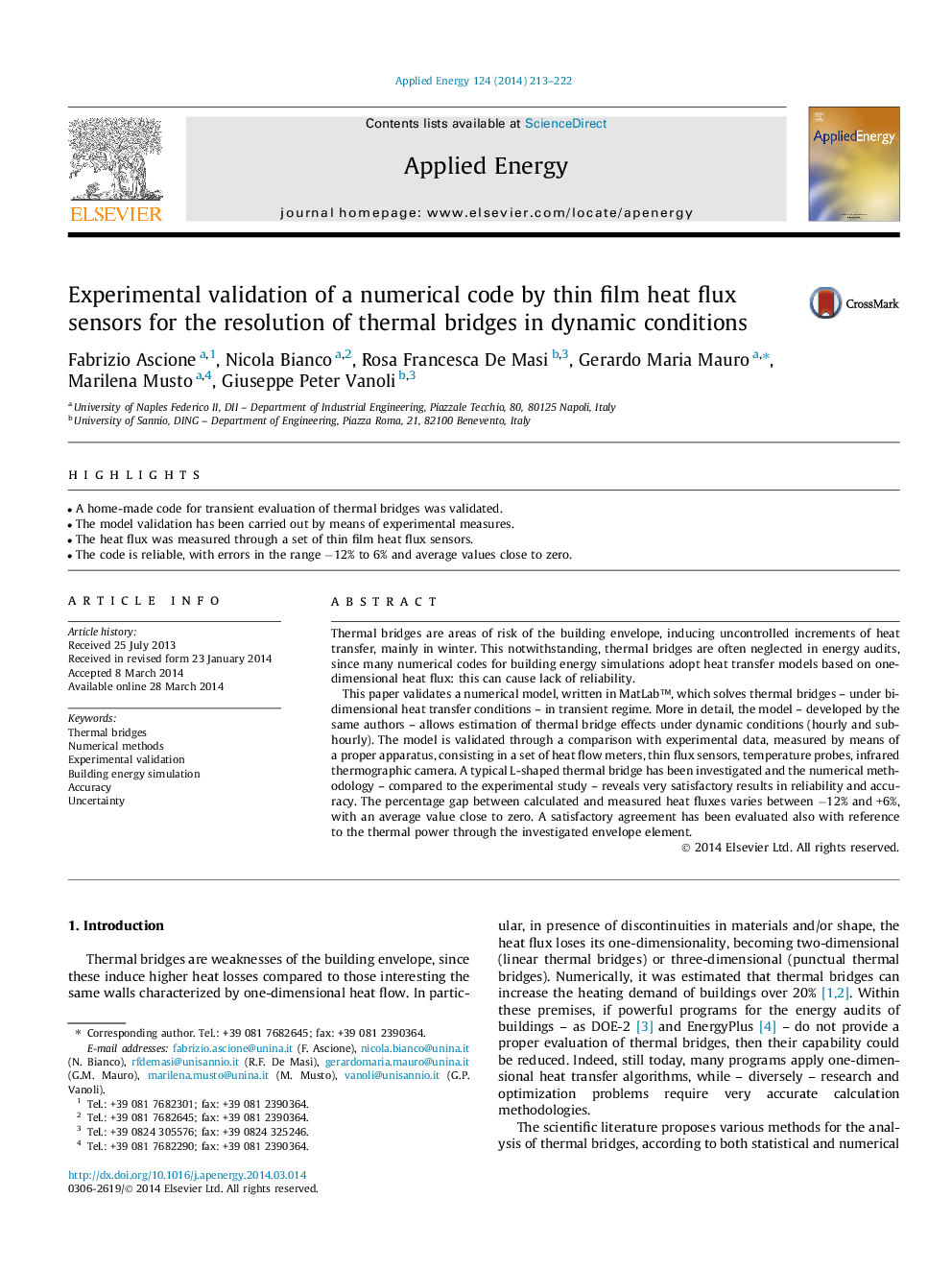| Article ID | Journal | Published Year | Pages | File Type |
|---|---|---|---|---|
| 242826 | Applied Energy | 2014 | 10 Pages |
•A home-made code for transient evaluation of thermal bridges was validated.•The model validation has been carried out by means of experimental measures.•The heat flux was measured through a set of thin film heat flux sensors.•The code is reliable, with errors in the range −12% to 6% and average values close to zero.
Thermal bridges are areas of risk of the building envelope, inducing uncontrolled increments of heat transfer, mainly in winter. This notwithstanding, thermal bridges are often neglected in energy audits, since many numerical codes for building energy simulations adopt heat transfer models based on one-dimensional heat flux: this can cause lack of reliability.This paper validates a numerical model, written in MatLab™, which solves thermal bridges – under bi-dimensional heat transfer conditions – in transient regime. More in detail, the model – developed by the same authors – allows estimation of thermal bridge effects under dynamic conditions (hourly and sub-hourly). The model is validated through a comparison with experimental data, measured by means of a proper apparatus, consisting in a set of heat flow meters, thin flux sensors, temperature probes, infrared thermographic camera. A typical L-shaped thermal bridge has been investigated and the numerical methodology – compared to the experimental study – reveals very satisfactory results in reliability and accuracy. The percentage gap between calculated and measured heat fluxes varies between −12% and +6%, with an average value close to zero. A satisfactory agreement has been evaluated also with reference to the thermal power through the investigated envelope element.
